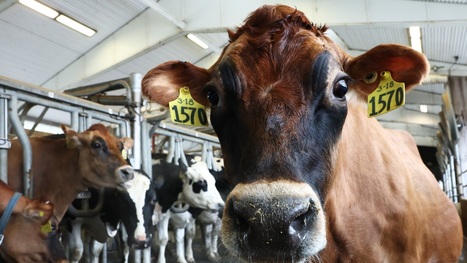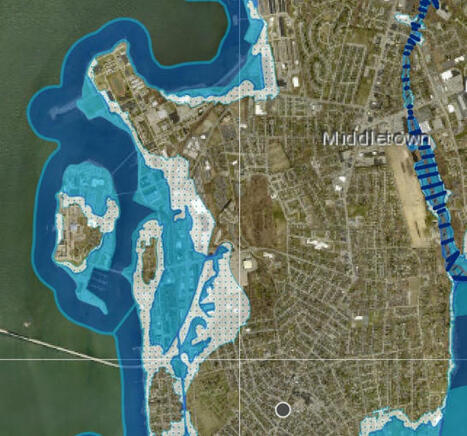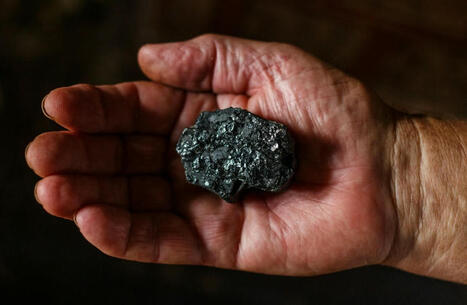 Your new post is loading...
 Your new post is loading...
June 1 marked the beginning of hurricane season, a period whose existence was news to Trump’s head of FEMA, David Richardson, who had no prior experience managing disaster relief. Richardson was appointed to replace FEMA acting chief Cameron Hamilton, who was fired summarily after telling a congressional subcommittee that he didn’t think FEMA should be shut down. Trump’s attack on FEMA goes beyond even the Project 2025 design, which proposed to cut FEMA and turn some of its functions over to the states. Homeland Security Secretary Kristi Noem said in March that she wanted FEMA shut down entirely (she later backpedaled and spoke of shrinking and reforming it). But most states have nothing like FEMA’s capacity or experience, and don’t want FEMA reduced or closed.
Scientists say it’s important to research geoengineering – large-scale attempts to cool the planet to fight climate change – in case we ever need it. But the technologies are risky. Florida will soon outlaw testing them in state airspace.
MASHPEE – The Mashpee Wampanoag Tribe has been awarded a $700,000 grant from the state to improve the quality of Santuit Pond by reducing persistent degradation from excessive nutrient loading. The…
Fintech lenders are more likely to approve loans in high climate risk areas, but property values in those areas are dropping.
The Supreme Court on Thursday unanimously ruled to limit the scope of environmental review required under a seminal 1970s environmental protection law. The move brought a proposed 88-mile railroad line that would […]
As the first fully automated 18-wheeler rolls out, states would have no ability to govern what is taking place on their own roads.
More than a thousand people who worked to keep American agriculture free of pests and disease have left the federal workforce in President Trump's massive government downsizing.
Newport RI flood map, from the Rhode Island Floodplain Viewer. White area is current 500-year (.2 percent annual risk) flood zone; light blue is 100-year (1 percent annual risk) flood risk area; darker blue is combined storm surge and flooding 1 percent annual risk. Map does not incorporate projected risk due to accelerating climate change. Housing was a key issue in the 2024 election. We're short between 4 and 7 million homes, and Americans believe affordable housing is a particularly thorny problem. The Trump administration is taking advantage of this crisis to push for deregulation of building standards—particularly those that relate to flood and other climate-related risks. Both developers and lenders want federal regulators to loosen whatever rules they can. Their pitch—that lowering standards will provide opportunities to build and finance more housing—meets the moment. Federal regulators now in office will be happy to oblige, even if that means encouraging building in areas that insurance companies are already exiting because of concerns about exposure to losses driven by the physical effects of climate change.
There are more than 130 active wildfires across the country, half of which are considered out of control
The ruling marks a legal victory for the MTA, but does not end the agency's court battle with the feds over the future of the tolling program.
Hurricane season in the United States kicks off this Sunday, June 1st, and the Federal Emergency Management Agency (FEMA) is not prepared. In an internal memo obtained by The Handbasket that was sent on Thursday to Acting FEMA Administrator David Richardson by Stephanie Dobitsch, Associate Administrator for Policy & Program Analysis, Dobitsch outlined the status of “critical functions” at the agency that a working group determined were at “high risk” of not properly functioning because of “significant personnel losses in advance of the 2025 Hurricane Season.” It offers justifications for certain functions being included in the report, and “corrective action” staff can ostensibly take to fix them. The document paints a picture of an agency in charge of mitigating disasters that’s in the midst of its own.
Nothing’s CEO speaks to WIRED about how he sees the smartphone market playing out in an era of AI, and where he thinks the competition is going wrong.
It’s kinda weird how, the more oligarchic our society gets, the more racist it gets. Why is the rise of billionaires attended by a revival of discredited eugenic ideas, dressed up in modern euphemisms like “race realism” and “human diversity”? I think the answer lies in JK Galbraith’s observation that “The modern conservative is engaged in one of man’s oldest exercises in moral philosophy; that is, the search for a superior moral justification for selfishness.” The theory of markets goes like this:
|
Higher carbon dioxide levels and warmer temperatures are causing plants to increase their pollen production, which can be severe for allergy sufferers. As the seasons shift into spring and summer, flowers bloom, trees turn green, and the days grow longer and sunnier. However, for many, this time also marks the start of allergy season in the United States, which can begin as early as February in warmer regions and persist through early summer. Tree pollen usually kicks things off in early spring, followed by grass pollen in late spring and summer. Later in the year, fall allergies—primarily triggered by weed pollen, such as ragweed—begin in late summer and continue into autumn.
FALMOUTH – The Falmouth Select Board has voted to send a letter to the Massachusetts Development Finance Agency outlining concerns about a potential combined civilian and military airport at Joint …
Clownfish in Papua New Guinea are temporarily shrinking in response to heat stress caused by climate change, a new study found. Here's how that might help them deal with warmer water temps.
In recent years, pandemic-related supply chain failures, oil shocks, and China’s growing dominance over critical materials has forced policymakers to reckon with the limits of free market orthodoxy. In 2018, President Trump bucked the Republican party line on trade by imposing tariffs on steel and aluminum. The Biden administration has made “Build Back Better” the…
The budget reconciliation bill includes an environmentally devastating natural resources giveaway to a Chilean billionaire with close ties to the Trump family.
I'm going to level with you: sometimes I think I might know too much about climate change. Before you stop reading and delete all your news apps, stay with me for a minute. I know I chose this, after all, and I see my job as a privilege in many ways. But reporting on climate change means I get a front-row seat to the millions of ways humans' rising greenhouse gas emissions are fueling a hotter, more dangerous, more chaotic world. That takes a toll.
When Donald Trump’s in a hole, he digs deeper. As he does with other policies affecting immigration, trade and culture wars, Trump is still — or once again — pushing coal, beautifully clean coal as he calls it, as an energy goal. In pursuit of his belief that coal is being overlooked or displaced by “woke” concerns for solar, wind and alternative energy sources, last month Trump signed a series of executive orders towards reviving the dying coal industry. Whatever political sense it makes for Trump to court miners (or mine owners) in West Virginia and Wyoming, his efforts seem a tad shy of recognizing environmental, economic or market condition realities.
Through interviews with Flint residents, Alaa Al Ramahi captured the stress and resentment families are feeling from the Flint Water Crisis.
Editor’s Note: This post is from our data newsletter, the Rural Index, headed by Sarah Melotte, the Daily Yonder’s data reporter. Subscribe to get a
Legislation that would "kill renewable energy in Texas" failed to progress in the state's House of Representatives.
Park and forest managers can’t rely on the past any longer to understand future risks. Fires, pests and climate change are changing the game.
Colton George felt sick. The 9-year-old Indiana boy told his parents his stomach hurt. He kept running to the bathroom and felt too ill to finish a basketball game. Days later, he lay in a hospital bed, fighting for his life. He had eaten tainted salad, according to a lawsuit against the lettuce grower filed by his parents on April 17 in federal court for the Southern District of Indiana. The E. coli bacteria that ravaged Colton’s kidneys was a genetic match to the strain that killed one person and sickened nearly 90 people in 15 states last fall. Federal health agencies investigated the cases and linked them to a farm that grew romaine lettuce. But most people have never heard about this outbreak, which a Feb. 11 internal Food and Drug Administration memo linked to a single lettuce processor and ranch as the source of the contamination. In what many experts said was a break with common practice, officials never issued public communications after the investigation or identified the grower who produced the lettuce. From failing to publicize a major outbreak to scaling back safety alert specialists and rules, the Trump administration’s anti-regulatory and cost-cutting push risks unraveling a critical system that helps ensure the safety of the U.S. food supply, according to consumer advocates, researchers and former employees at the FDA and U.S. Department of Agriculture.
|






 Your new post is loading...
Your new post is loading...



























